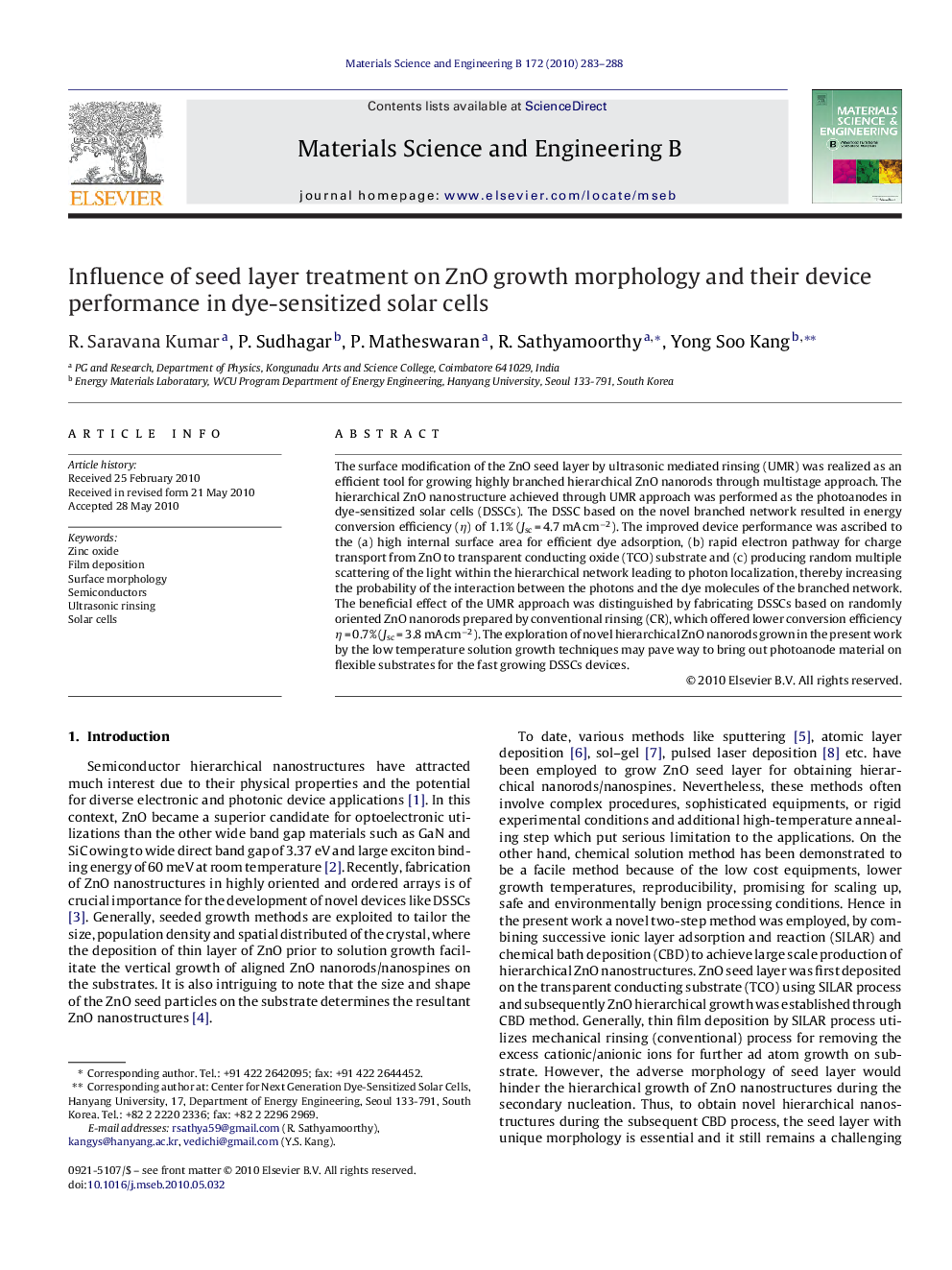| Article ID | Journal | Published Year | Pages | File Type |
|---|---|---|---|---|
| 1529356 | Materials Science and Engineering: B | 2010 | 6 Pages |
The surface modification of the ZnO seed layer by ultrasonic mediated rinsing (UMR) was realized as an efficient tool for growing highly branched hierarchical ZnO nanorods through multistage approach. The hierarchical ZnO nanostructure achieved through UMR approach was performed as the photoanodes in dye-sensitized solar cells (DSSCs). The DSSC based on the novel branched network resulted in energy conversion efficiency (η) of 1.1% (Jsc = 4.7 mA cm−2). The improved device performance was ascribed to the (a) high internal surface area for efficient dye adsorption, (b) rapid electron pathway for charge transport from ZnO to transparent conducting oxide (TCO) substrate and (c) producing random multiple scattering of the light within the hierarchical network leading to photon localization, thereby increasing the probability of the interaction between the photons and the dye molecules of the branched network. The beneficial effect of the UMR approach was distinguished by fabricating DSSCs based on randomly oriented ZnO nanorods prepared by conventional rinsing (CR), which offered lower conversion efficiency η = 0.7% (Jsc = 3.8 mA cm−2). The exploration of novel hierarchical ZnO nanorods grown in the present work by the low temperature solution growth techniques may pave way to bring out photoanode material on flexible substrates for the fast growing DSSCs devices.
